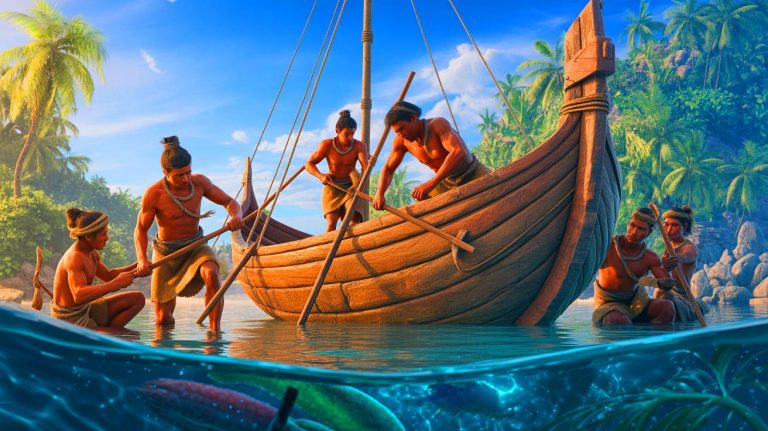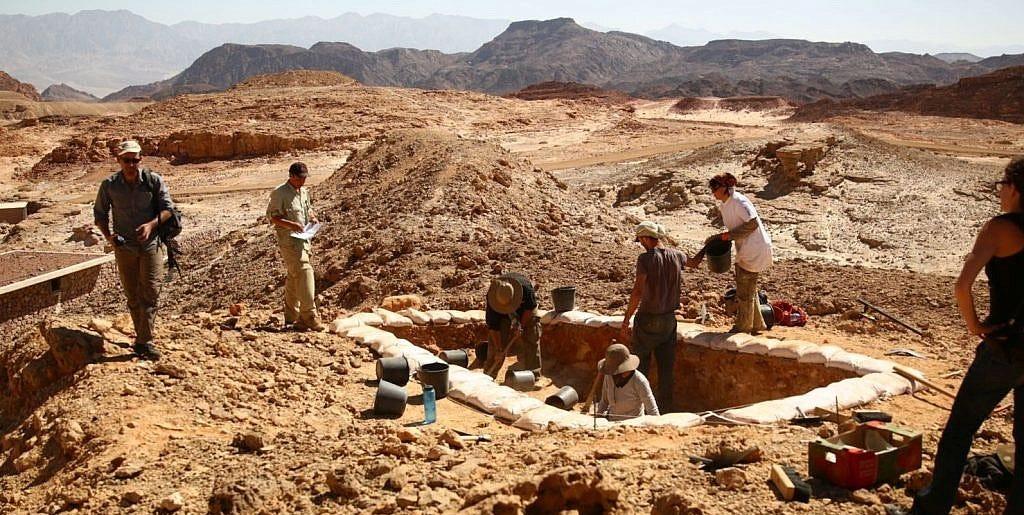| IN A NUTSHELL |
|
In recent archaeological discoveries, Southeast Asia has emerged as a significant player in the ancient world, particularly in terms of maritime technology. Researchers have uncovered stone tools and other artifacts that suggest the region was a technological leader in seafaring practices as far back as 40,000 years ago. These findings challenge the long-held belief that Europe and Africa were the primary centers of technological advancement during the Paleolithic era. Instead, the evidence indicates that the ancient inhabitants of the Philippines and surrounding islands were pioneers in boatbuilding and open-sea fishing, offering a fresh perspective on human history.
The Importance of Stone Tools in Archaeological Research
The recent discoveries in Southeast Asia revolve primarily around stone tools excavated from sites in the Philippines, Indonesia, and Timor-Leste. These tools provide crucial evidence of the technological capabilities of ancient seafarers. Unlike organic materials, which rarely survive the ravages of time, stone tools endure and offer a window into past civilizations. Researchers from Ateneo de Manila University have published findings in the Journal of Archaeological Science that challenge the prevailing notion that technological prowess during the Paleolithic era was concentrated in Africa and Europe.
The study highlights how these stone tools were used not just for basic survival but also for complex tasks like plant processing. This processing involved the extraction of fibers, which were necessary for making ropes, nets, and other essential components for boatbuilding and open-sea fishing. Such sophisticated use of natural resources underscores the advanced skills possessed by the region’s ancient inhabitants.
Revealing a Culture of Advanced Seafaring
The archaeological evidence paints a vivid picture of a robust seafaring culture in ancient Southeast Asia. The discovery of fishing hooks, gorges, net weights, and the remains of deep-ocean fish such as tuna and sharks further supports this view. These findings indicate that the ancient Southeast Asians were not only adept at constructing boats but also had a deep understanding of the ocean, including the seasonality and migration routes of various fish species.
Such capabilities required well-crafted tools and materials, including strong ropes and fishing lines. The remains of large predatory pelagic fish indicate an advanced knowledge of deep-sea fishing techniques. The combination of technological innovation and maritime knowledge likely made Southeast Asia a center for technological advancements during this period, setting the stage for the rich maritime traditions that continue in the region today.
Challenging Prevailing Theories of Migration
The study also takes aim at the widely accepted theory that early human migrations across Southeast Asia were passive, involving drift on bamboo rafts. Instead, the researchers argue that these movements were deliberate and orchestrated by skilled navigators equipped with the necessary technology and knowledge to traverse challenging open waters. The evidence suggests that these early seafarers constructed boats using organic materials, held together by plant-based ropes, and adapted this technology for their fishing endeavors.
The recognition of such advanced maritime technology in prehistoric ISEA highlights the ingenuity of early Philippine peoples and their neighbors. This discovery not only reshapes our understanding of human migration but also positions Southeast Asia as a historical hub of technological innovation and maritime expertise.
Implications for the History of Human Innovation
The findings from Southeast Asia have significant implications for our understanding of human history. They suggest that the region was a center for technological innovation much earlier than previously believed. The advanced boatbuilding and seafaring skills of these ancient peoples demonstrate a level of sophistication that rivals, and in some cases surpasses, that of contemporaneous civilizations in Europe and Africa.
This revelation invites a reevaluation of the global timeline of technological progress and highlights the importance of Southeast Asia in the narrative of human development. The ingenuity of these early seafarers laid the groundwork for the rich maritime traditions that continue to thrive in the region today. As we uncover more about these ancient innovators, we are left to ponder: What other hidden chapters of human history await discovery?
Did you like it? 4.3/5 (21)









Wow, this is mind-blowing! Who would have thought Southeast Asia was such a technological hub 40,000 years ago? 🤯
Can someone explain how they date these tools so accurately? I’m always curious about the dating methods used in archaeology.
Incredible findings! Thanks for sharing such fascinating insights into our past. 😊
It’s all Vedic roots. Like Voltaire said . . . everything.
Why has it taken so long to recognize the contributions of Southeast Asia to early civilization? Seems like a major oversight!
I can give a few guesses as to why that is. First, Europeans are often very self important and are reluctant give full credit to other regions. It traditionally has been something Europeans so to help explain why they had the right to dominate world in the nineteenth and twentieth centuries. There are remnants of that world view that persist to this day
Second the climate and environment in Southeast Asia isn’t particularly well suited to preserving historical artifacts. Look at Angkor Wat for example. It was only recently realized using Lidar technology that it was a far larger city than ever known that it was easily holding the world’s largest city population during it’s heyday. The population was pushing a million people at a time that the largest European cities were around 100,000 people and it would take another 500 years for European cities to reach the mark. But most of residential areas of Angkor Wat left no visible trace on the landscape today so it’s only with advanced in technology that we’ve learned about this and this is about a city that was abandoned only 600 years ago.
Finally, 40,000 years ago is right smack dab in the middle of the Ice Age. Sea faring people are going to live on the coast. However, those ancient coastlines are well under water today, so any traces of their lives and technologies are largely obscured and lost to history.
Is there any evidence of similar technologies in other parts of the world from that time?
This is a game-changer for sure. Makes me wonder what else we might be wrong about in history!
So cool to see the Philippines and neighboring regions getting the recognition they deserve in ancient history! 🌏
Ai art on a sustainability websites. Hypocrisy